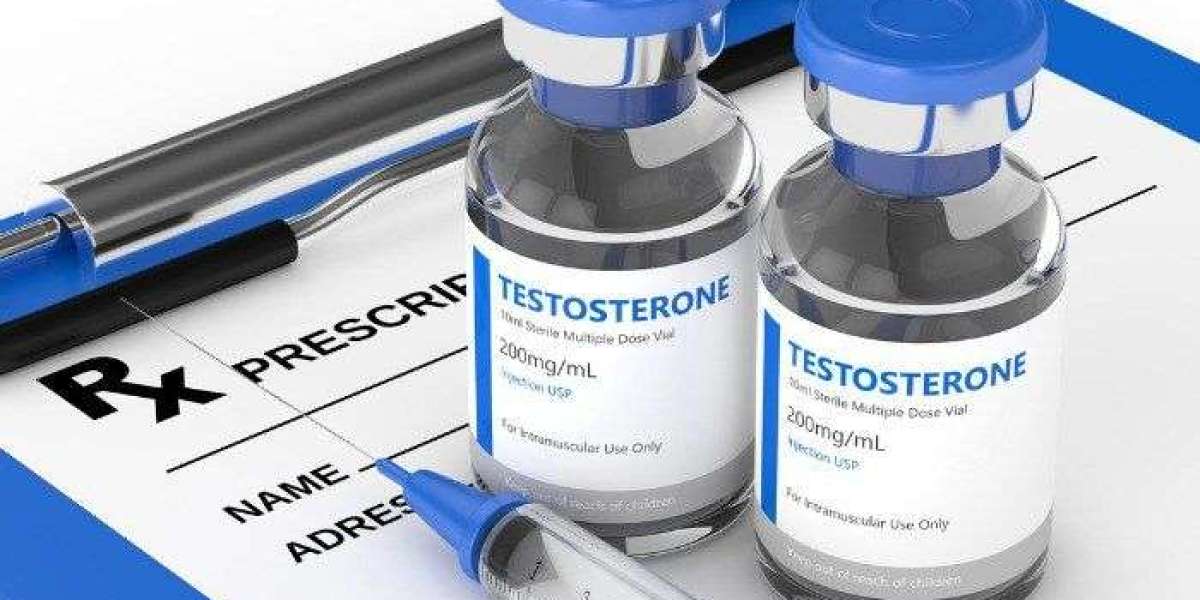What Is Testosterone Replacement Therapy (TRT)?
Testosterone Replacement Therapy (TRT) is a medical treatment designed to restore optimal testosterone levels in men suffering from low testosterone, also known as hypogonadism. Testosterone is a crucial hormone responsible for maintaining muscle mass, bone density, sexual health, mood, and overall vitality. As men age, testosterone production gradually declines, often leading to a range of symptoms that can significantly impact quality of life.
TRT involves the administration of bioidentical or synthetic testosterone to bring hormone levels back to a healthy range, thereby reversing the symptoms of deficiency and enhancing overall well-being.
Symptoms of Low Testosterone
Recognizing the signs of low testosterone is critical to seeking timely intervention. Common symptoms include:
Reduced libido and erectile dysfunction
Chronic fatigue and low energy levels
Loss of muscle mass and increased body fat
Mood swings, depression, and irritability
Difficulty concentrating and memory issues
Decreased bone density
Reduced motivation and overall vitality
If left untreated, low testosterone can lead to serious health conditions such as osteoporosis, type 2 diabetes, and cardiovascular disease.
Who Needs Testosterone Replacement Therapy?
TRT is primarily prescribed to men diagnosed with clinically low testosterone confirmed through blood tests. Ideal candidates for testosterone replacement therapy include:
Men aged 35 and older experiencing the symptoms listed above
Individuals with pituitary gland disorders
Men recovering from testicular injury or infection
Patients with chronic medical conditions that impair hormone production
Those with underactive testicles or congenital hormonal disorders
Types of Testosterone Replacement Therapy
1. Intramuscular Injections
Testosterone cypionate or enanthate is injected into the gluteal muscle every 1–2 weeks. This method provides a controlled release of testosterone and is one of the most common TRT options.
2. Transdermal Gels and Creams
Applied daily to the upper arms, shoulders, or abdomen, these absorb through the skin and maintain steady hormone levels. Brands include AndroGel, Testim, and Axiron.
3. Testosterone Patches
Patches are applied to the skin once daily, offering slow and consistent hormone release. This option is convenient but may cause skin irritation in some users.
4. Pellets (Subcutaneous Implants)
Tiny testosterone pellets are implanted under the skin every 3–6 months, releasing testosterone gradually. This method offers long-term convenience and steady hormone delivery.
5. Buccal Tablets
Placed in the upper gum region, buccal tablets dissolve gradually, allowing testosterone to enter the bloodstream via the oral mucosa.
Benefits of Testosterone Replacement Therapy
1. Improved Sexual Function and Libido
One of the most immediate and noticeable benefits of TRT is the restoration of sexual desire, stronger erections, and enhanced performance. It often improves confidence and intimate relationships.
2. Increased Muscle Mass and Strength
TRT stimulates protein synthesis, promotes muscle growth, and enhances recovery post-exercise. Men on TRT typically experience significant improvements in lean body mass.
3. Reduced Body Fat
By enhancing metabolism and supporting insulin sensitivity, TRT helps reduce abdominal fat, particularly in men struggling with weight gain due to hormonal imbalances.
4. Boosted Energy and Vitality
TRT combats chronic fatigue and increases energy levels, enabling individuals to maintain active lifestyles and improve daily productivity.
5. Enhanced Mood and Mental Clarity
Testosterone plays a key role in cognitive function and emotional stability. Patients on TRT often report better focus, mental sharpness, and reduced depression or anxiety.
6. Stronger Bones
TRT increases bone mineral density, reducing the risk of fractures and osteoporosis, especially in aging men.
7. Cardiovascular Health Support
Although research is ongoing, some studies suggest that optimal testosterone levels can improve cholesterol ratios, reduce inflammation, and support arterial function.
Potential Side Effects and Considerations
While TRT is highly effective, it must be administered under medical supervision. Potential side effects include:
Acne and oily skin
Sleep apnea aggravation
Prostate enlargement or risk in predisposed individuals
Erythrocytosis (increased red blood cell count)
Testicular shrinkage and reduced fertility
Proper monitoring through regular blood tests and medical evaluations ensures safe, effective treatment. It is essential to work with a licensed hormone replacement specialist to customize dosage and delivery methods.
Testosterone Replacement Therapy for Women
Although testosterone is primarily a male hormone, women also produce it in smaller quantities. Female testosterone deficiency can lead to low libido, fatigue, and mood issues. Low-dose testosterone therapy is sometimes prescribed for women, particularly during menopause, under strict medical guidance.
Finding Testosterone Replacement Therapy Near You
When searching for testosterone replacement therapy near me, it’s important to consider the following:
1. Choose a Reputable Clinic
Select a clinic specializing in hormone optimization with licensed endocrinologists or HRT practitioners. Avoid centers that do not provide lab diagnostics or medical follow-up.
2. Look for Personalized Treatment Plans
A one-size-fits-all approach doesn’t work with hormones. The best providers offer customized TRT plans based on comprehensive blood panels, lifestyle, and individual health goals.
3. Evaluate Pricing and Transparency
Costs vary based on the treatment method, dosage, and follow-up care. Reputable clinics offer clear pricing, package options, and insurance support when applicable.
4. Read Verified Reviews
Check for verified testimonials, client experiences, and online ratings to ensure the clinic delivers consistent, safe results.
Frequently Asked Questions (FAQs)
How long does it take for TRT to work?
Most patients notice improvements in energy and libido within 3–6 weeks, with full results on muscle mass and mood developing after 3–6 months.
Can I stay on TRT for life?
Yes. Many men remain on TRT long-term under medical supervision. However, therapy must be continuously monitored for effectiveness and safety.
Will TRT affect my fertility?
TRT can suppress sperm production. If fertility is a concern, options such as HCG therapy may be used alongside TRT to maintain sperm count.
Is TRT covered by insurance?
Some insurance plans cover TRT when it's deemed medically necessary. It's important to confirm coverage with your provider and clinic.
Conclusion: Restoring Life Through Testosterone Optimization
Testosterone Replacement Therapy has emerged as a transformative solution for men suffering from the debilitating effects of low testosterone. With advances in diagnostic testing, treatment customization, and delivery methods, TRT empowers men to reclaim their vitality, performance, and confidence. From sexual wellness to physical strength and mental clarity, TRT offers a powerful tool in the pursuit of long-term health and happiness.







